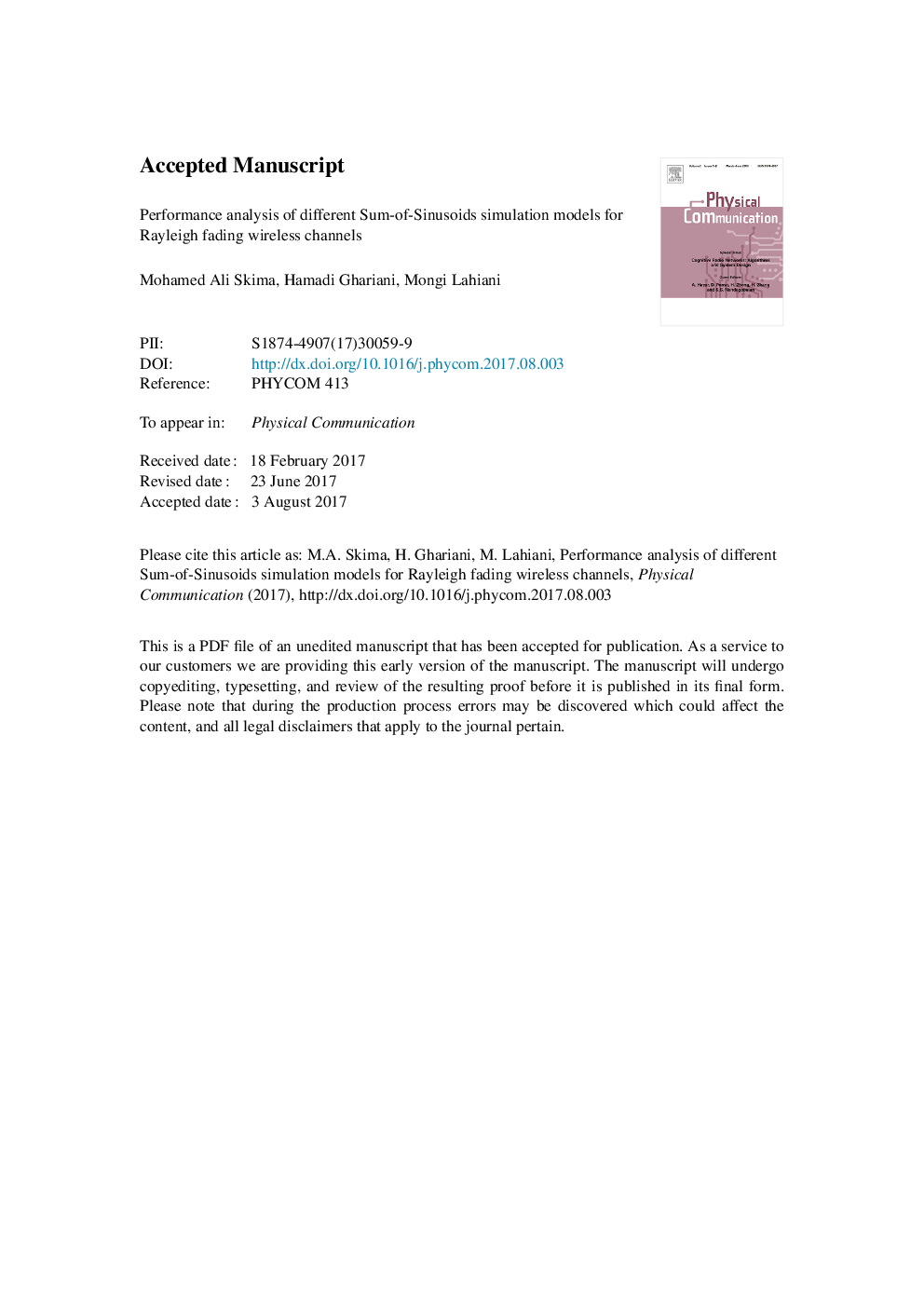| Article ID | Journal | Published Year | Pages | File Type |
|---|---|---|---|---|
| 6889361 | Physical Communication | 2017 | 31 Pages |
Abstract
In this paper, extensive computations are conducted to assess the performance of five of the most accepted sum-of-sinusoids (SOS) simulation models for Rayleigh fading channels in terms of both accuracy and complexity. The statistical properties of first-, second- and higher-order are investigated using appropriate quantitative measures. This study is carried out for various numbers of sinusoids in order to find the better trade-off between complexity and accuracy. Moreover, for the correlation statistics, different numbers of simulation trials are used to better conclude about the ergodicity property of the different models. Numerical results demonstrate that, a recently introduced non-ergodic stochastic model exhibits a “likely-ergodic” behavior and its correlation functions vary little over the simulation trials. The variances of the time-averaged correlation functions are used to investigate the convergence behavior of the stochastic non-ergodic models. In this connection, analytical expressions of the variances of these functions are derived and compared with the simulated ones. In addition, the accuracy of the models is inspected through the mean and variance of the level crossing rate (LCR) and the average fade duration (AFD) relative errors.
Related Topics
Physical Sciences and Engineering
Computer Science
Computer Networks and Communications
Authors
Mohamed Ali Skima, Hamadi Ghariani, Mongi Lahiani,
